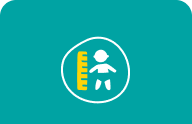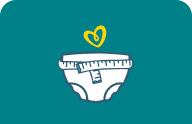When Do Babies Drop a Nap? What to Know
As your baby or toddler grows, they gradually will drop naps until they get enough sleep at night to not need any daytime sleep.
When your baby drops a nap and goes through a nap transition depends on multiple factors, including their age. Here we go over when you should expect your baby to drop a nap, signs that show your baby is ready to drop a nap, how many naps babies should take by age, and how to help your baby drop a nap without getting fussy or overtired.
Why Babies Drop Naps
While naps are essential when your baby is little, as they grow, they need less daytime sleep and their nap schedule changes.
This is because as their circadian rhythm starts to mature around the 16-week mark, their sleep becomes more organized and starts to resemble an adult. This means more sleep happens at night, so less is needed during the day.
After the newborn phase, babies often transition from 4 or 5 naps all the way down to 1 before they stop napping. If babies nap for longer than is developmentally needed, they may struggle to fall asleep or stay asleep at night as their sleep cycles are off. They also may protest naps altogether, making naptime unenjoyable for all.
How to Tell if Your Baby is Ready to Drop a Nap
Trouble Falling Asleep at Nap Time: If your baby who used to nap like clockwork suddenly starts trouble falling asleep at nap time over several days, they're likely ready to nap transition. You also may notice they are more alert during times they used to be drowsy. Usually, they’ll first drop their last nap of the day, not drop the morning nap.
Resisting Naps: Another sign your baby is ready to drop a nap is if they consistently resist napping or appear more energetic during their usual nap time. This will happen for a few days––if you have a one-off difficult nap, they aren’t necessarily ready for to drop a nap.
Trouble Sleeping at Bedtime: If your baby who previously went to sleep at a regular bedtime suddenly struggles to fall asleep, they may be getting too much daytime sleep. It also could mean their wake window before bedtime is too short. If your baby isn’t ready to drop their afternoon nap, try moving that nap earlier (try by an hour) to extend their wake window before bed––this can help realign their sleep cycle.
Not Cranky Without Nap: If babies need a nap they may be cranky or fussy. However, if your baby misses a nap yet stays happy, and this happens over the course of a few days, it likely means they no longer need the extra daytime sleep.
Just like adults, sometimes a baby needs an extra snooze after a busy day or if they’re feeling unwell. If you are interested in learning more about nap transitions or are struggling with helping your baby drop a nap, try the Smart Sleep Coach by Pampers™ app. Whether you want to double check your baby is napping at the right time for their age or want help with sleep training during nap times, the app offers step-by-step guidance right from your phone––and access to real-life sleep consultants along the way.
Nap Transitions by Age
All babies are different; however nap transitions often happen in a certain window of time depending on your baby’s age.
Newborn nap transitions
For the first few months, babies sleep around the clock. A newborn schedule is unpredictable––therefore they don’t really nap (yet!) Their wake windows are often 45 minutes or less, and they sleep over 16 hours every day.
Three-to-four-month-old nap transition
Around three or fourth months your baby may take as many as 5 naps every day but will soon settle into a 4-nap-a-day schedule.
Five-month-old nap transition
Around the five-month or six-month mark, most babies will drop their fourth nap and start sleeping longer in the mid-afternoon. For some babies the 4 to 3 nap transition happens on its own––your baby will start protesting that last nap or start sleeping longer during the nap before.
Once you drop that fourth nap, moving bedtime up a bit will help prevent your baby from becoming overtired. Don’t be surprised if your baby becomes a little cranky as their sleep cycle adjusts. Once they settle into their schedule, you may notice bedtime becoming far easier––and earlier.
Eight-month-old nap transition
At around eight-months-old (or a little before) your baby likely has a lot of energy in the morning and a longer wake window for their first nap. As they stay up longer in the morning and their first and second naps get pushed until later, it becomes time to drop that third nap. The 3 to 2 nap transition may cause your baby to be moody, likely between their second nap and bedtime. Starting your bedtime routine and moving up bedtime by 20-30 minutes for a few days can help. Once their moodiness goes away, bedtime can go back to the original time.
Twelve- to fifteen-month-old nap transitions
A big nap transition is from 2 naps to 1, which often happens between your baby’s first birthday and 15-months-old.
Experts say that babies usually combine their two naps into one long afternoon nap, and often do it on their own! Your baby will likely tell (or show) you when they are ready for one nap. You may notice they stay up later in the morning without showing sleep cues or their afternoon nap starts later or doesn’t last as long.
Toddler nap transitions
It’s common for toddlers to drop their last nap around 3 or 4 years old. Some toddlers need a nap for longer––up to age 5 at times––and others may drop that last name earlier. The 1 to 0 nap transition happens when your toddler no longer needs the daytime sleep. Signs it's time for this transition is your toddler struggling to fall asleep at night.
Worried that you’ll forget when to expect a nap transition? Download the Smart Sleep Coach app to take the guesswork out of everything dropping a nap. It’ll show you your baby’s sleep patterns and give you insight on when it may be time to change their nap schedule.
Simple breakdown of nap transitions by age
3-4 months: 5 to 4 naps
5 months: 4 to 3 naps
8 months: 3 to 2 naps
12-15 months: 2 to 1 nap
Remember, every child is different, and this breakdown is just a guideline of what you may expect.
The Bottom Line
When it comes to nap transitions, babies are different and may do things on their own timeline. This is normal, so don’t worry or stress about dropping a nap and try to follow their lead.
If you want insights into your baby’s sleep patterns to make it easier to identify when it’s time for a nap transition, start tracking their sleep in the Smart Sleep Coach app. The app’s Smart Schedule the exact time you should put your baby down for naps and bedtime to align your baby’s sleep schedule and increase the chances that they fall asleep fast––and sleep longer stretches.
How We Wrote This Article The information in this article is based on the expert advice found in trusted medical and government sources, such as the American Academy of Pediatrics and the American College of Obstetricians and Gynecologists. You can find a full list of sources used for this article below. The content on this page should not replace professional medical advice. Always consult medical professionals for full diagnosis and treatment.








